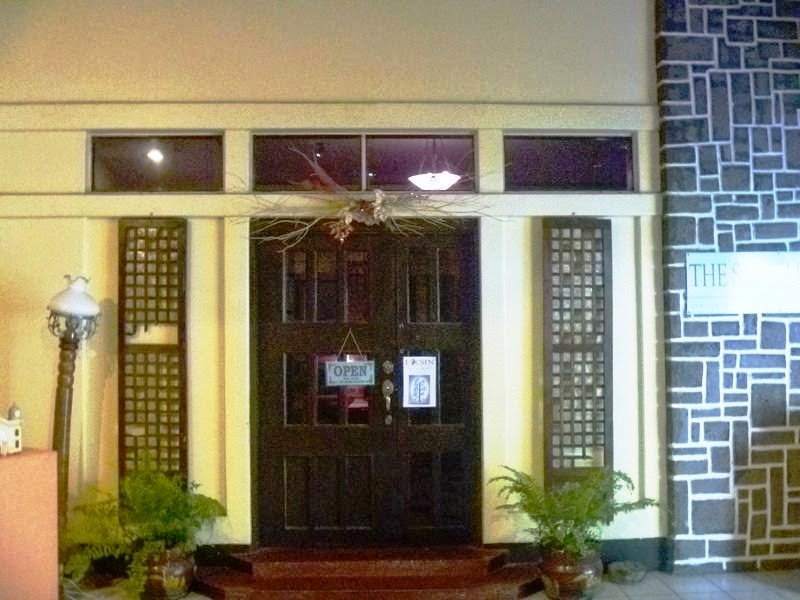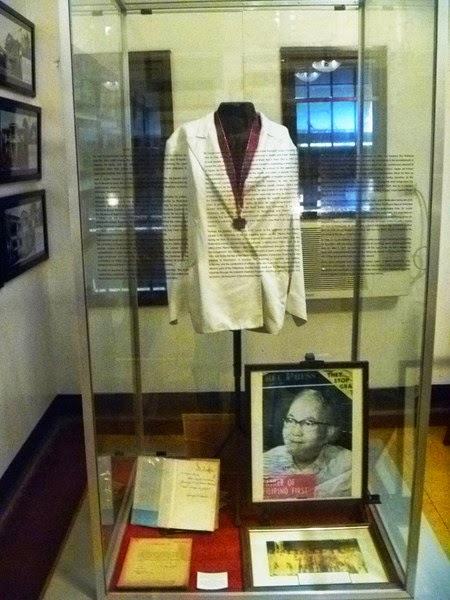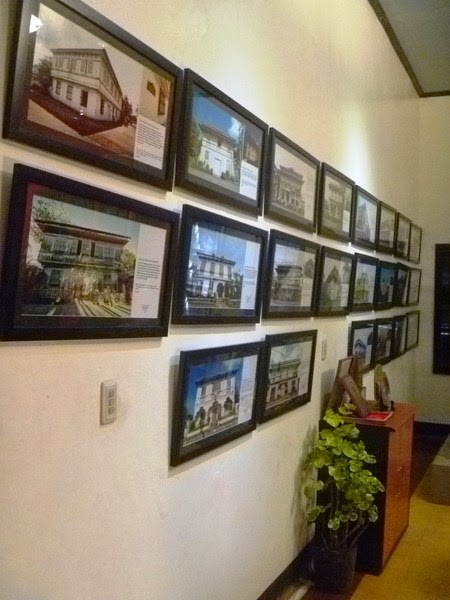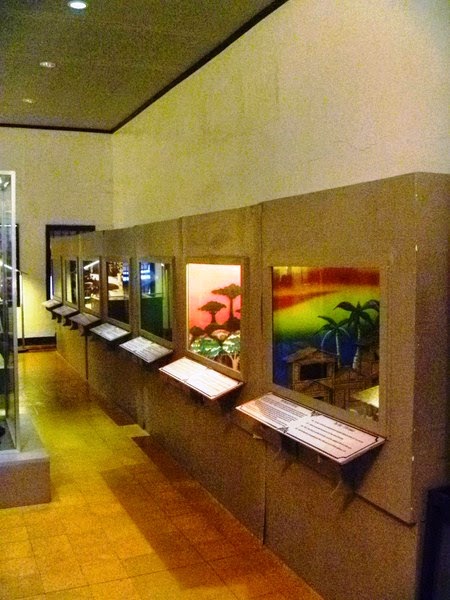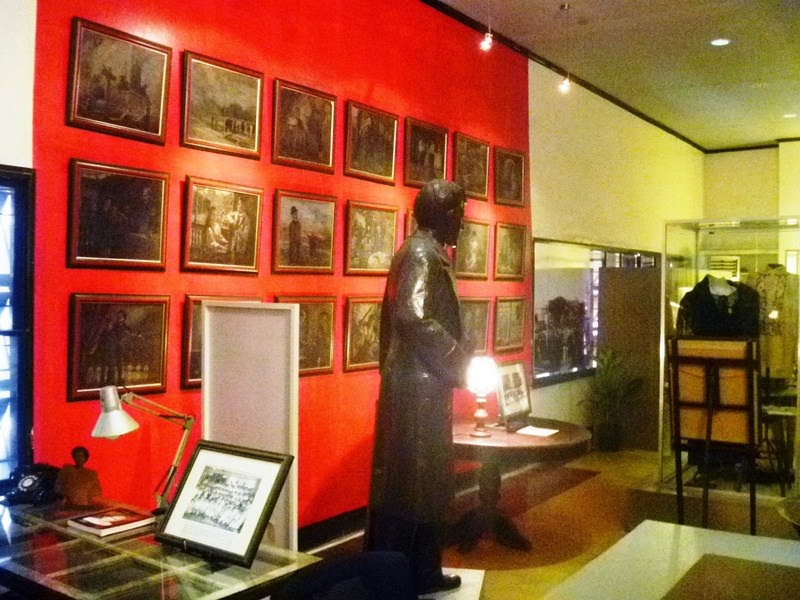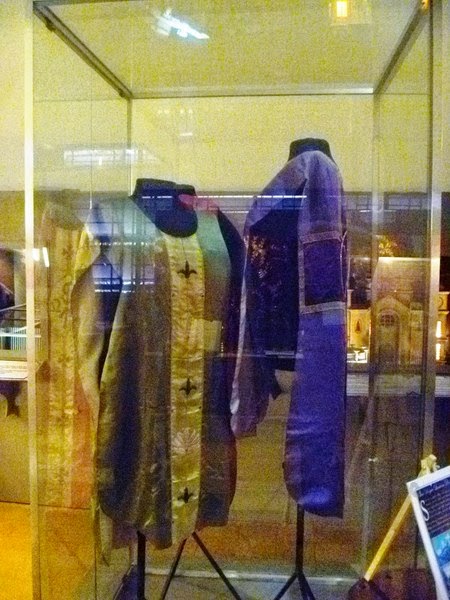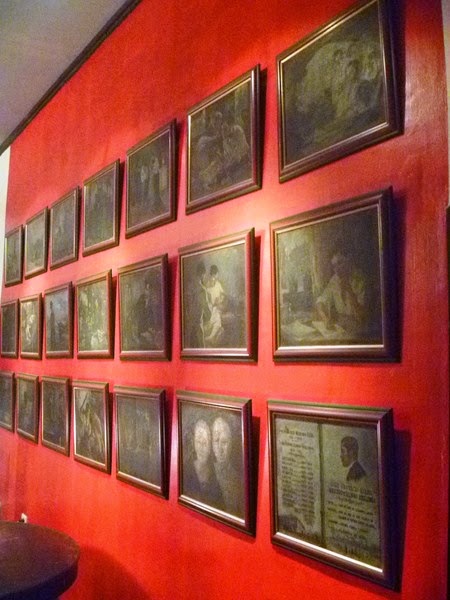The Silay Museum, inaugurated last November 4, 2012, the eve of the Cinco de Nobiembre celebration, is located at the former site of the City Library. It is a fulfillment of the dream of Mayor Jose “Oti” Montelibano and the Silaynons for a museum that would tell Silay’s history and the aspirations of its people. The concept, prepared by city councilor Neil Solomon L. Locsin, grandson of the late Sen. Jose C. Locsin, was executed by cultural affairs officer Achilles “Panoy” Corteza.
Near the door and adorning a cozy nook along the walls are numerous photographs, taken by members of the Camera Club of Negros, through the Negros Cultural Foundation, of 28 ancestral houses which were identified by the National Historical Commission (NHC) as architectural landmarks.
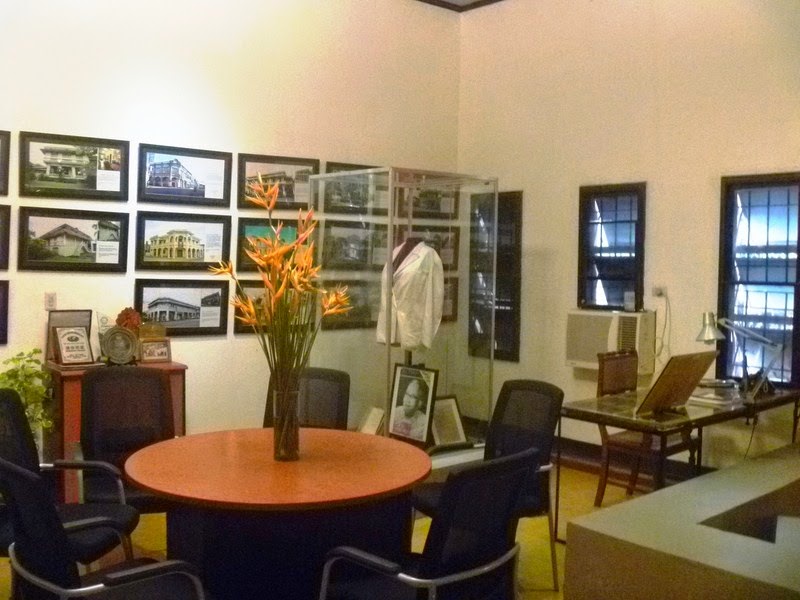 Glass enclosures preserve a collection of clothes and manuscripts owned by famous sons and daughters of Silay. They include the vestments of Silay parish priest Fr. Eusebio Locsin of Molo (who encouraged his relatives in Iloilo to settle in Silay because of its promising sugar industry), collection of traje de Silay (gowns) and precious documents (last entry of Fr. Eulogio Saez in Libro de Baptismo de Silay, etc.) and articles (old statue of San Diego Alcala, etc.) from the San Diego Pro-Cathedral and the Diocese of Bacolod, with permission from Fr. Demetri Gatia and Bishop Vicente M. Navarra.
Glass enclosures preserve a collection of clothes and manuscripts owned by famous sons and daughters of Silay. They include the vestments of Silay parish priest Fr. Eusebio Locsin of Molo (who encouraged his relatives in Iloilo to settle in Silay because of its promising sugar industry), collection of traje de Silay (gowns) and precious documents (last entry of Fr. Eulogio Saez in Libro de Baptismo de Silay, etc.) and articles (old statue of San Diego Alcala, etc.) from the San Diego Pro-Cathedral and the Diocese of Bacolod, with permission from Fr. Demetri Gatia and Bishop Vicente M. Navarra.
A collection of 27 paintings (“KABUHI, Paghim akas kag Pagkabahaginan ni Rizal”), done by the relatively unknown and underrated Caviteno master painter Simon Saulog (1916-1995), was commissioned by Sen. Jose C. Locsin in 1957 for the Filipiniana section of the public library. They depict the different episodes in the work, life and death of Philippine National Hero Jose Rizal whom the senator personally admired. Saulog was trained in the Fernando Amorsolo school of painting espousing Classicism and idealizing rural life.
Its seven eye-catching and colorful dioramas, inspired by the Ayala Museum. tells the cultural history of Silay from its beginnings (The Village by the Sea: 16th -17th Century, Life within the Estacada: 18th Century), how it was shaped by the sugar industry (Migration and Development: 19th Century), the the struggle for freedom (Cradle of Freedom: 1898 Cinco de Noviembre Revolution), the birth of the “Paris of Negros” (The Golden Age: The 20th Century), the effects of the war (The Last Stand: World War II, ) and to where it is now (Cityhood).
Also on display are memorabilia and manuscripts (including a classified document presented to him that discusses, among other things, action plans that the country will take upon the expiration of the 1954-1974 Laurel-Langley Agreement) of the late Sen. Jose C. Locsin;, old coins and paper currency; antique furniture; scaled models of Balay Negrense and San Diego Pro-Cathedral; an old kawa (cauldron used in the making of muscovado sugar); and old photos of Silay and its notable personalities.
Silay Museum: Jose C. Locsin Cultural and Civic Center (in front of the Silay Tourism Office), 6116 Silay City, Negros Occidental. Tel: (034) 495-5553.
Silay City Tourism Division: Tel: (034) 495-5553.Fax: (034) 495-0848. Email: silaycity_tourism@yahoo.com.

